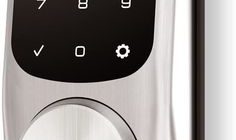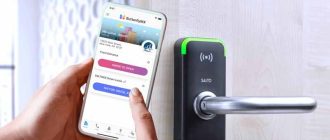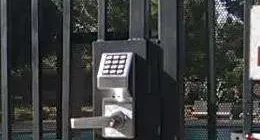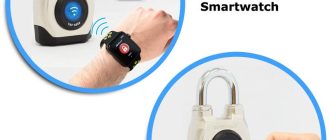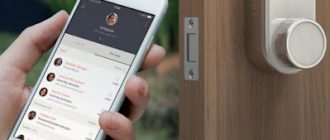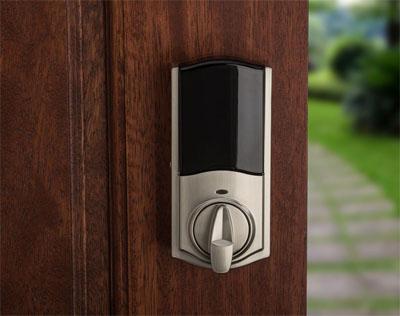
Can smart locks be hacked
In today’s world of advanced technology, smart locks have become a popular choice for homeowners seeking convenience and increased security. These locks allow users to control access to their homes through their smartphones or voice-controlled devices. However, with this convenience comes the concern for cybersecurity vulnerabilities.
The protection of our homes and personal belongings is of utmost importance, and the possibility of smart locks being hacked poses a significant threat. As with any connected device, smart locks have the potential to be targeted by cybercriminals who exploit weaknesses in the system to gain unauthorized access.
While the idea of someone hacking into your locks and gaining entry to your home may seem like a plot straight out of a movie, the reality is that smart locks do have their vulnerabilities. The increasing connectivity of our everyday devices means that these locks are not immune to intrusion.
However, there are steps you can take to enhance the security of your smart locks and protect your home from potential cyber threats. By implementing strong passwords, regularly updating firmware, and staying informed about the latest security measures, you can mitigate the risk of your smart locks being hacked. It’s essential to stay vigilant and take proactive steps to ensure the security of your home.
The Growing Popularity of Smart Locks
With advances in technology, smart locks have become increasingly popular in recent years. These locks offer a convenient and innovative way to secure your home by eliminating the need for traditional keys. Instead, smart locks use digital authentication methods such as biometrics or smartphone apps to grant access.
However, as with any smart device, there is a concern about the potential for them to be hacked. Smart locks are not invulnerable to intrusion, and hackers may exploit vulnerabilities in their systems to gain unauthorized access to your home.
The vulnerability of smart locks lies in their connection to the internet. This connectivity allows for remote control and monitoring, but it also opens up the possibility of cyber threats. Hackers may attempt to intercept the communication between the lock and its control app, or they may try to exploit weaknesses in the lock’s firmware or software.
To ensure the security of your smart lock, it is essential to follow cybersecurity best practices. This includes regularly updating the lock’s firmware and software to patch any discovered vulnerabilities. It is also recommended to use strong and unique passwords for your smart lock accounts to prevent unauthorized access.
Additionally, consider using additional security measures in conjunction with your smart lock, such as a robust home network with a firewall or a virtual private network (VPN) to encrypt your connection. These precautions can help minimize the risk of a potential breach.
Overall, while smart locks offer convenience and enhanced security, it is crucial to be aware of the potential vulnerabilities they may possess. By taking the appropriate cybersecurity measures and staying informed about the latest threats, you can ensure the safety and integrity of your home’s security system.
Understanding the Potential Risks
Smart locks, while convenient and innovative, are not immune to the potential risks associated with technology. With increasing reliance on internet-connected devices, vulnerabilities in smart lock security can pose a threat to the overall security of your home.
One of the main risks with smart locks is the possibility of being hacked. As with any device connected to the internet, smart locks can become a target for cybercriminals who are skilled at exploiting vulnerabilities in cybersecurity. If a hacker gains access to your smart lock, they could potentially unlock your door without your knowledge or permission.
Additionally, another vulnerability is the potential for bugs or flaws in the smart lock’s software or firmware. These bugs can be exploited by hackers to gain unauthorized access to your home. It is crucial to regularly update your smart lock’s software to ensure you have the latest security patches and bug fixes.
To mitigate these risks, it is vital to take proactive steps to enhance the security of your smart lock. Implementing strong and unique passwords for your lock, as well as your Wi-Fi network, can make it more difficult for hackers to gain unauthorized access. Additionally, enabling two-factor authentication adds an extra layer of protection by requiring an additional verification step before accessing your smart lock.
Furthermore, it is crucial to choose a reputable and trusted smart lock manufacturer. Look for companies that prioritize security and regularly release updates to address any vulnerabilities that may arise. Take the time to research and read customer reviews to ensure you are selecting a smart lock with a strong track record of security.
In conclusion, while smart locks offer convenience and efficiency, it is essential to understand the potential risks associated with this technology. By staying informed about the latest cybersecurity threats and taking proactive measures to strengthen your smart lock’s security, you can better protect your home from being hacked.
Recent Instances of Smart Lock Hacks
As smart technology becomes more prevalent in our homes, the issue of security and cybersecurity is becoming increasingly important. Smart locks, which provide convenience and a sense of protection, are not immune to intrusion or hacking.
There have been several instances where smart locks have been hacked, raising concerns about the vulnerability of these devices. These hacks have exposed potential flaws in the technology and have highlighted the need for better protection and security measures.
One example of a smart lock hack occurred in 2016 when a group of researchers found vulnerabilities in certain smart lock models that allowed them to gain unauthorized access. By exploiting these vulnerabilities, they were able to bypass the lock’s security measures and gain entry into homes.
In another instance, a hacker was able to gain control of a smart lock by exploiting a vulnerability in the lock’s wireless communication protocol. This allowed the hacker to remotely unlock the door without the owner’s knowledge or permission.
These incidents highlight the importance of regularly updating the firmware and software of smart lock devices. Manufacturers need to stay vigilant and address any potential security flaws to ensure the protection of their customers.
It’s also important for homeowners to be proactive in protecting their smart lock systems. They should ensure that their wireless networks are secure, use strong and unique passwords, and consider adding additional layers of security such as two-factor authentication.
While smart locks offer convenience and ease of use, it’s essential to be aware of their potential vulnerabilities. By taking the necessary precautions and staying informed about the latest security measures, homeowners can better protect their smart lock systems from being hacked.
Steps to Secure Your Smart Lock
When it comes to the cybersecurity of your home, securing your smart lock is essential. With the increasing number of smart devices being used in our households, it’s important to protect them from potential hacks and intrusions. Here are a few steps you can take to secure your smart lock:
1. Choose a reputable smart lock:
Start by selecting a smart lock from a trusted and reputable manufacturer. Look for a lock that has undergone rigorous testing and comes with reliable security features.
2. Keep your software up to date:
Regularly check for software updates for your smart lock and ensure that you install them as soon as they become available. These updates often contain security patches that fix vulnerabilities and enhance the overall protection.
3. Use a strong passphrase:
Choose a strong and unique passphrase for your smart lock. Avoid using generic or easily guessable passwords. A combination of upper and lower case letters, numbers, and special characters can make it more secure.
4. Enable two-factor authentication (2FA):
Enable two-factor authentication for your smart lock if it’s supported. This provides an extra layer of security by requiring a second form of verification, such as a fingerprint or a unique code.
5. Secure your Wi-Fi network:
Your smart lock relies on your Wi-Fi network to function, so securing it is crucial. Set a strong password for your Wi-Fi, use encryption, and regularly update your router’s firmware.
6. Be cautious with access sharing:
Only share access to your smart lock with trusted individuals. Avoid providing access to anyone you don’t fully trust or who may compromise your security.
7. Monitor for suspicious activity:
Regularly monitor your smart lock’s activity logs and notifications. Be alert to any unusual or unauthorized access attempts and take appropriate action if needed.
8. Implement additional security measures:
Consider implementing additional security measures, such as using a virtual private network (VPN) for your smart lock’s connection, or using a separate network segment for your smart devices.
By following these steps, you can significantly enhance the security of your smart lock and protect your home from potential cybersecurity threats. Remember, staying proactive and vigilant is key when it comes to protecting your smart technology and ensuring your peace of mind.
Choose a Strong and Unique Password
When it comes to securing your home with smart locks, choosing a strong and unique password is essential. Your password is the first line of defense against potential intrusions and hacks, and it is important to take it seriously.
Here are some tips for creating a strong and unique password:
- Use a combination of uppercase and lowercase letters, numbers, and special characters.
- Avoid using easily guessable passwords, such as your birthdate or name.
- Make your password at least 8 characters long, but ideally longer.
- Use a different password for each of your smart locks and other online accounts.
- Consider using a password manager to help you generate and store strong passwords.
- Regularly update your passwords to ensure maximum security.
By following these guidelines, you can greatly reduce the vulnerability of your smart locks to hacking and intrusion. Remember, cybersecurity is a crucial aspect of using smart lock technology, and taking the time to choose a strong and unique password is a simple yet effective step towards enhancing the security of your home.
Enable Two-Factor Authentication
As smart locks become more popular, the need for strong cybersecurity measures is essential. Two-factor authentication (2FA) is a powerful tool that adds an extra layer of security to your smart lock system. By requiring a second form of verification, such as a fingerprint scan or an authentication code sent to your mobile device, 2FA significantly reduces the risk of your smart locks being hacked.
Implementing 2FA on your smart locks is a proactive step in protecting your home and personal information. It adds an additional barrier for hackers, making it much more difficult for them to gain unauthorized access.
Furthermore, 2FA provides peace of mind and reassurance that even if your password is compromised, your smart locks are still protected. It is crucial to choose a reputable 2FA method and ensure that it is regularly updated to address any potential vulnerabilities.
Remember, technology continues to evolve, and so do the methods cybercriminals use to exploit security weaknesses. By enabling two-factor authentication and staying informed about the latest security measures, you can effectively safeguard your smart locks and maintain the highest level of security for your home.
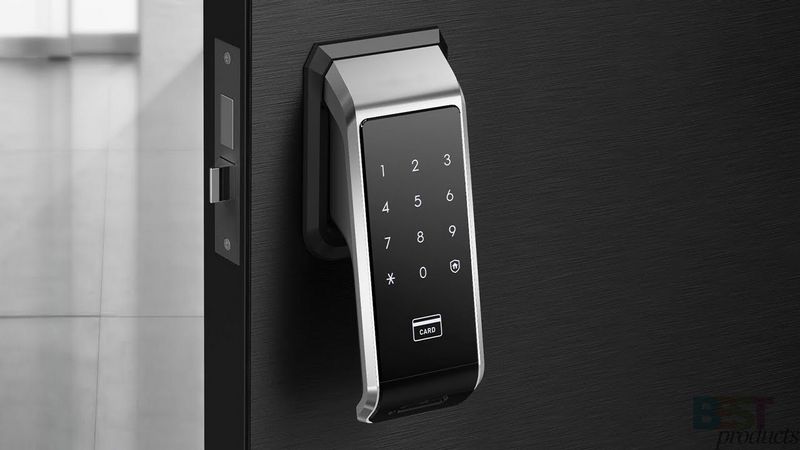
Regularly Update Your Smart Lock Firmware
In order to ensure the protection of your home, it is important to regularly update the firmware of your smart locks. Firmware updates often include security patches that address vulnerabilities found in the technology, preventing hackers from exploiting them. By keeping your smart lock firmware up to date, you can ensure that it is equipped with the latest security measures to protect against intrusion attempts.
Cybersecurity experts constantly strive to stay one step ahead of hackers, but as technology evolves, so do hacking techniques. Smart locks are not exempt from being targeted by hackers, and failing to update the firmware leaves them vulnerable to intrusion. Without the latest security patches, hackers may be able to exploit weaknesses in the firmware, gaining unauthorized access to your home.
Regularly updating your smart lock firmware is a simple but effective way to enhance the security of your home. Manufacturers often release firmware updates to address newly discovered vulnerabilities and improve overall cybersecurity. By installing these updates as soon as they become available, you can ensure that your smart locks have the necessary protection against potential hacking attempts.
To update the firmware of your smart lock, consult the manufacturer’s instructions or visit their website for guidance. Many smart lock manufacturers provide detailed instructions on how to check for firmware updates and install them. It is important to follow these instructions carefully to ensure a successful update process.
In conclusion, regularly updating your smart lock firmware is crucial for maintaining the security of your home. This simple step can help protect your locks from being hacked and prevent unauthorized access to your property. Stay vigilant and keep an eye out for firmware updates to ensure that your smart lock is equipped with the latest cybersecurity measures.
Secure Your Home Network
A secure home network is crucial in protecting your smart locks and other connected devices from intrusion and hacking. Here are some tips to enhance the security of your home network:
- Change the default login credentials of your router to prevent unauthorized access.
- Regularly update the firmware of your router to fix any vulnerabilities.
- Create a strong and unique password for your Wi-Fi network.
- Enable network encryption, such as WPA2, to protect your data from interception.
- Disable remote management of your router to prevent unauthorized access.
- Keep your router in a secure location to limit physical access.
- Use a dedicated guest network for visitors to separate their devices from your main network.
- Install a reliable firewall to monitor incoming and outgoing network traffic.
- Regularly scan your network for any vulnerabilities or suspicious activities.
- Consider using a virtual private network (VPN) to encrypt your internet connection and enhance security.
By implementing these security measures, you can significantly reduce the risk of intrusion and protect your smart locks and other devices connected to your home network. Remember, cybersecurity should always be a top priority to ensure the safety of your home and personal information.
Be Mindful of Physical Security
While it is important to consider the cybersecurity aspects of smart locks, it is also crucial to pay attention to physical security. In many cases, an intrusion can happen due to a vulnerability in the physical protection of your smart locks.
Smart locks can be an enticing target for hackers who are looking to gain unauthorized access to your home. They may exploit vulnerabilities in the lock’s firmware or use techniques like lock bumping to gain entry. This is why it is essential to invest in high-quality smart locks that are designed with robust security features.
To enhance the physical security of your home, consider the following tips:
1. Choose a reputable brand: Opt for smart locks from well-known manufacturers that have a track record of providing reliable and secure products. Research and read reviews to ensure you select a brand that prioritizes security.
2. Use strong and unique passwords: Just like with any other account or device, it is important to use strong and unique passwords for your smart locks. Avoid using easily guessable passwords and enable two-factor authentication if available.
3. Regularly update firmware: Manufacturers often release firmware updates to address security vulnerabilities. Make sure to regularly check for updates and install them as soon as possible to ensure your smart lock is protected against the latest threats.
4. Secure physical access points: In addition to securing your smart lock, it is crucial to reinforce other physical access points to your home, such as doors and windows. Consider installing sturdy deadbolt locks and window locks to make it more difficult for intruders to gain access.
5. Be cautious with sharing access: Be mindful of who you share access to your smart lock with. Only grant access to trusted individuals and revoke access for anyone who no longer needs it. This will help minimize the risk of unauthorized access.
By being proactive and mindful of physical security, you can significantly reduce the chances of your smart locks being hacked. Remember, a holistic approach that combines both cybersecurity and physical security measures is essential to protect your home.
Use a Dedicated Smartphone for Smart Lock Access
Smart locks can provide an added level of convenience for homeowners, allowing them to control access to their homes remotely. However, this smart technology also comes with potential vulnerabilities that can be exploited by hackers.
One way to enhance the security of your smart lock system is to use a dedicated smartphone for smart lock access. By designating a specific smartphone solely for accessing and controlling your smart locks, you can reduce the risk of intrusion and protect your home from cyber threats.
A dedicated smartphone ensures that your smart lock system is not exposed to potential security risks that might be present on your primary device. By keeping your smart lock applications and related information isolated on a separate device, you can minimize the chance of a breach in your other personal data. This extra layer of security helps to safeguard your home and prevent unauthorized access.
Using a dedicated smartphone for smart lock access also allows for better control over the device’s security measures. You can regularly update the operating system and security software of the dedicated smartphone to ensure it has the latest protections against potential hacking attempts.
Furthermore, using a dedicated smartphone also eliminates the risk of accidental or unwanted changes made to your smart lock settings. By keeping the access control separate from your main device, you can minimize the chances of unintentionally allowing access to someone who shouldn’t have it.
When choosing a dedicated smartphone for smart lock access, consider using a device that is not connected to any other personal accounts or services. This helps to reduce the risk of any security vulnerabilities that may exist on your other devices. Additionally, be sure to set up strong passwords, enable two-factor authentication, and install reputable security apps to further enhance the security of your dedicated smartphone.
In conclusion, using a dedicated smartphone for smart lock access is a valuable step in enhancing the security of your home. By isolating your smart lock applications and information on a separate device, you can better protect against potential hacking attempts and ensure the utmost security for your smart lock system.
Invest in Additional Security Measures
While smart locks can provide convenience and improved security for your home, it’s important to remember that no technology is completely immune to intrusion. Even the most advanced smart locks can be hacked if the right vulnerability is exploited.
To ensure the utmost protection for your home, it’s advisable to invest in additional security measures. These extra layers of security can complement the functionality of smart locks and help reduce the risk of unauthorized access.
One option is to install a home security system that includes cameras and sensors. This will provide you with real-time monitoring and alerts, giving you a better chance of catching any suspicious activity before it becomes a serious issue.
In addition, consider reinforcing your doors and windows with stronger materials and locks. This can act as a physical barrier against break-ins and make it more difficult for potential intruders to gain access to your home.
Another effective measure is to install motion-activated outdoor lighting. Well-lit areas can deter criminals as they prefer to operate in the cover of darkness. The sudden illumination can startle intruders and draw attention to their presence.
Finally, it’s important to regularly update and patch your smart locks and other smart home devices. Manufacturers often release software updates to address any security vulnerabilities that may have been discovered. By staying up to date with these updates, you can reduce the risk of your devices being hacked.
By investing in additional security measures, you can enhance the protection provided by smart locks and create a more secure environment for your home and family.
Keep an Eye on Security News
To ensure the cybersecurity of your smart locks, it is crucial to stay informed about the latest developments in technology and potential vulnerabilities. By keeping up with security news, you can learn about any new threats or weaknesses that may be discovered in smart locks or other smart home devices.
With the fast-paced nature of technology, it is not uncommon for vulnerabilities to be discovered in smart locks. These vulnerabilities can leave your home susceptible to intrusion and compromise the security of your property.
By regularly reading security news, you can stay informed about any new vulnerabilities or exploits that are discovered. This will allow you to take immediate action to protect your smart locks and ensure the security of your home.
Additionally, security news can provide valuable insights into the best practices for securing your smart locks. You can learn about any new security measures or software updates that are available to enhance the protection of your locks.
It is important to remember that technology is constantly evolving, and new vulnerabilities may be discovered at any time. By staying up to date with security news, you can stay one step ahead of potential threats and ensure the security of your smart locks and your home.
Q&A:
Can smart locks be hacked?
Yes, smart locks can be hacked. Like any other electronic device connected to the internet, smart locks are vulnerable to hacking attempts.
What are some ways to secure my home if I have a smart lock?
There are several ways to secure your home if you have a smart lock. First, make sure to change the default password of your smart lock to a strong and unique one. Additionally, regularly update the firmware of your smart lock to protect against any known vulnerabilities. It is also important to protect your home Wi-Fi network with a strong password and enable encryption. Finally, consider using two-factor authentication for an extra layer of security.
Are there any specific smart locks that are more secure?
While there are no locks that are 100% secure, there are some smart locks that offer advanced security features. Look for locks that have been tested and certified by reputable security organizations. Choose locks that offer strong encryption and tamper detection capabilities. It is also important to regularly check for software updates and patches to ensure your lock remains secure.
What are some signs that my smart lock has been hacked?
There are a few signs that your smart lock may have been hacked. These include unexpected changes in lock behavior, such as the lock randomly unlocking or locking itself, or the keypad or app not responding as expected. If you notice any unusual activity, it is a good idea to investigate further and consider contacting the manufacturer for assistance.
Can using a smart lock actually make my home less secure?
While smart locks offer convenience and additional security features, they can potentially make your home less secure if not properly configured or maintained. If you use weak or easily guessable passwords, do not update the firmware regularly, or do not secure your home Wi-Fi network, your smart lock could be more vulnerable to hacking attempts. It is important to take the necessary precautions to ensure your smart lock is being used securely.
Can smart locks be hacked?
Yes, smart locks can be hacked. As with any technology, there is always a potential risk of hacking. However, the chances of a smart lock being hacked are relatively low if it is properly installed, regularly updated, and used with other security measures.

